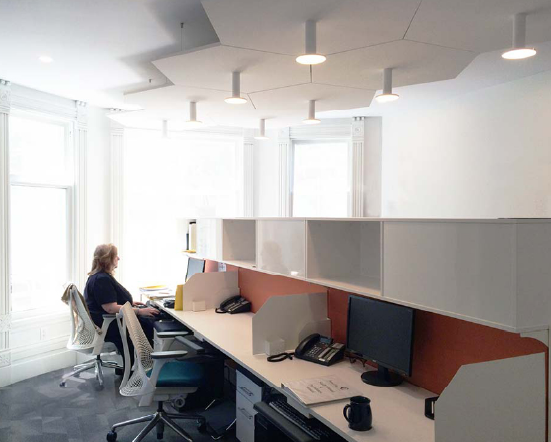Drop ceilings offer unique benefits that can make them a preferable choice over traditional drywall ceilings. From maintenance to aesthetics, understanding these advantages can help in making an informed decision.
Ease of Access to Utilities
Drop ceilings provide easier access to plumbing and electrical systems.
One of the primary benefits of drop ceilings is the accessibility they offer to utilities. If maintenance or repairs are required on plumbing or electrical lines, drop ceilings allow for quick access without the need to remove drywall. This can save both time and money in the long run, as professionals can work more efficiently. Additionally, if you need to add new fixtures or make modifications, the process is simpler with a drop ceiling. This flexibility is a significant advantage in commercial settings where frequent changes might be necessary.
Moisture Resistance
Drop ceilings are often more resistant to moisture than drywall ceilings.
In areas prone to humidity or moisture, such as basements or bathrooms, drop ceilings can be a better choice. The tiles used in drop ceilings are frequently made of materials that resist water, preventing mold and mildew growth. On the other hand, drywall can absorb moisture, leading to damage and the need for replacement. By choosing a drop ceiling with moisture-resistant tiles, you can extend the lifespan of your ceiling and maintain a healthier indoor environment.
Sound Absorption
Drop ceilings can offer superior sound insulation compared to drywall.
Noise reduction is a critical consideration in many settings, especially in offices or multi-family dwellings. Drop ceilings typically have acoustic tiles designed to dampen sound, minimizing echoes and disturbances from neighboring spaces. This feature is particularly valuable in environments where concentration and privacy are important. When comparing this to drywall, which does not provide significant soundproofing, drop ceilings emerge as a more effective solution for noise control.
Aesthetic Flexibility
Drop ceilings come in various styles and finishes to match different designs.
Another significant advantage of drop ceilings is their aesthetic versatility. With many design options available, including tiles that mimic wood or sleek metal, drop ceilings can enhance the visual appeal of a space. This adaptability allows property owners to create specific atmospheres while maintaining functionality. In contrast, drywall ceilings are more limited in terms of finishes and often require additional work for custom aesthetics.
Installation Time and Cost
Installation of drop ceilings is generally faster and more cost-effective than drywall.
The installation process for drop ceilings usually requires less labor and time compared to drywall ceilings. This efficiency translates to lower overall costs, making drop ceilings a budget-friendly option for many projects. Moreover, as drop ceilings do not require the same level of finishing and painting as drywall, the savings continue to accumulate throughout the project timeline. This factor is especially appealing for commercial renovations where time and budget constraints are rigorous.
Thermal Insulation
Drop ceilings can provide improved thermal insulation, keeping energy costs down.
In terms of energy efficiency, drop ceilings can contribute positively by providing an extra layer of insulation. Many ceiling tiles are designed to help regulate indoor temperatures, leading to reduced energy costs for heating and cooling. This feature can be particularly beneficial in climates with extreme weather, as it helps maintain comfort levels year-round. Drywall ceilings do not offer the same level of thermal protection, potentially leading to higher energy bills.
Future Modifiability
Drop ceilings allow for easy modifications in layout and design over time.
As businesses and homes evolve, the layout often needs to change to accommodate new technologies or functions. Drop ceilings facilitate this flexibility better than drywall, as they allow for quick reconfiguration without significant remodeling. Adding new lighting fixtures or changing the layout can be accomplished quickly, making it easy to adapt to changing needs. This adaptability ensures that your space remains functional and modern over time.
Overall, drop ceilings provide numerous advantages over drywall ceilings, making them an attractive choice for both residential and commercial applications. From ease of maintenance and sound absorption to cost-effectiveness and aesthetic flexibility, drop ceilings cater to a variety of needs in today’s dynamic environments.

